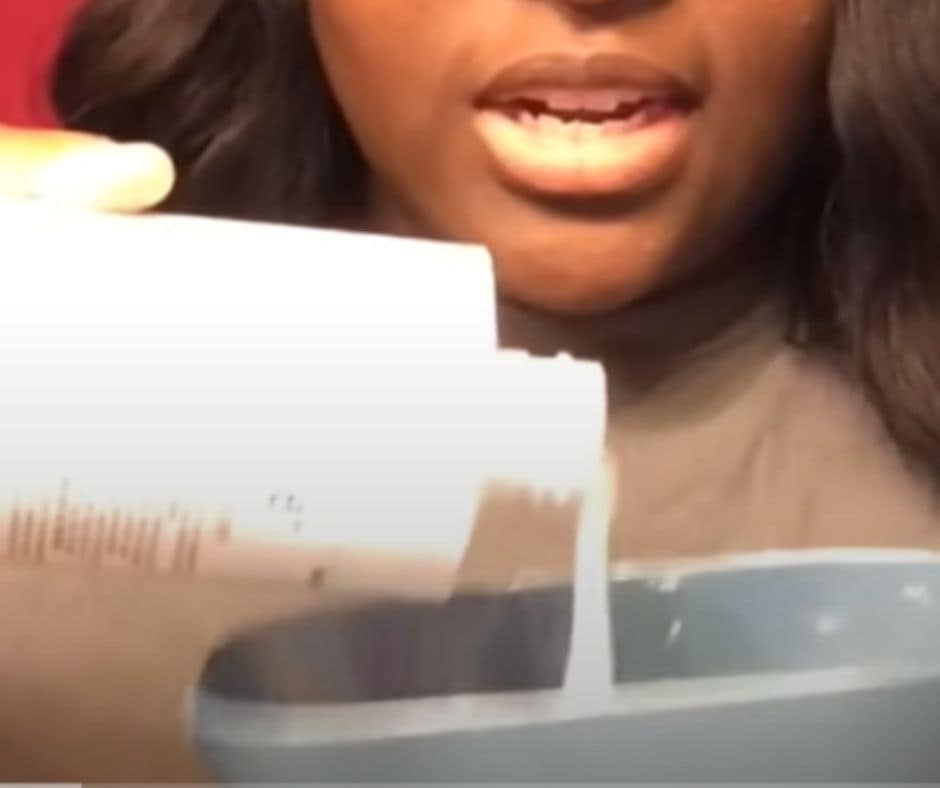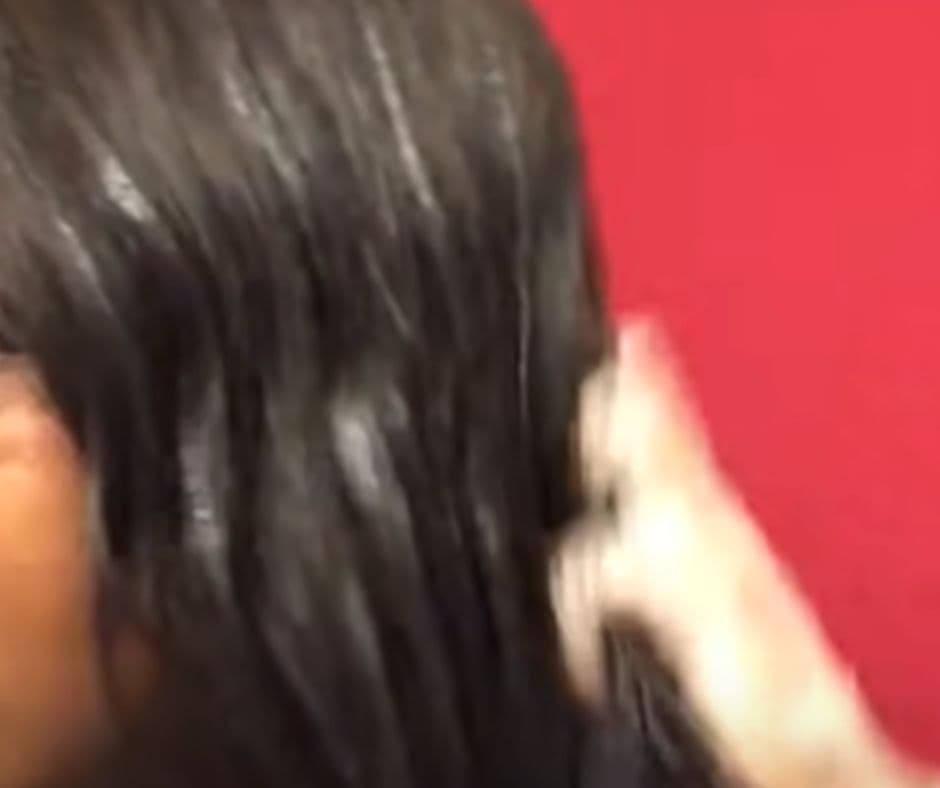What happens if you put too many developers in hair dye

It’s critical to use a developer with permanent hair coloring. Hair color would be useless without it. What happens, though, if you use too much developer in your hair dye? This article will show you how to quickly correct the problem and achieve the finest possible color outcome for your hair.
If you use too much development in your hair dye, you’ll wind up with a sloppy mixture and a poor color outcome. The combination can be saved by adding more color, although this is tough. It is preferable to discard the mixture and begin over.
It’s preferable to start anew, as annoying as it may be. However, it’s critical to get the developer to dye ratio just perfect to obtain a nice outcome.
Continue reading to learn more about developers and how to calculate the proper ratio to avoid color mishaps.
What Is Developer Used For?

Hydrogen peroxide is the most basic developer. Different firms use different ingredients, but hydrogen peroxide’s primary function is to raise the hair’s cuticle layer. As a result, the cuticle expands more as the developer gets stronger.
The developer is a bleaching/toning aid that contains hydrogen peroxide. The hydrogen peroxide in your hair opens up the cuticle, enabling the color to penetrate. If you’ve ever looked at the developer in a beauty store, you’ll realize that there are several levels to choose from. The numbers represent the quantity of hydrogen peroxide present; the greater the number, the more peroxide, the more lift.
It also influences the final hue, so select wisely. Furthermore, depending on the intensity of the hydrogen peroxide formulation, it disperses the present color and can boost hair color level.
Start by combining the color and conditioner in a 1:3 ratio, making just enough to saturate your hair. Next, to avoid color discoloration, carefully wash and dry your hair with shampoo before using Vaseline or your hair protection.. Work your way down the hair, saturating evenly as you add color to the roots. Finally, keep it on for 15 to 40 minutes before removing it.
What Happens If You Put Too Much Developer in Hair Dye?

If you’ve gone too far with your mix preparation and added too much developer, the best choice is to dump it in the trash and start over. More developers in the mix produce a hue that isn’t what you desire.
The importance of using the correct and precise amount of developer is that it allows the hair color pigment to sink in by opening up the hair cuticles.
If you use too much development in your hair dye mix, you’ll wind up with an opaque and dull color on your hair. If you’ve already used a lot of developers, adding additional dye to the mix will simply saturate the hair color.
What To Do If You Put Too Much Developer in Hair Dye?

Will it be too hazardous to use this chemical with the whitening agent because it also has discoloration properties?
Certain varieties of the developer, when combined with bleaching powder, may lighten uncolored hair by nearly five levels! That’s how, for example, a 20-volume drug works.
The impact of stronger developers will be considerably greater. What happens if you use too much developer when bleaching your hair? The result appears to be uncertain and unsatisfactory. The worst that may happen is that your hair becomes too bleached and damaged.
To avoid making a mistake, consider the proper proportions of these two ingredients: one part of the lightening agent and two parts of the developer will suffice for most lightening procedures.
To get the desired look, always use low-volume material. Even when used in conjunction with the dye, it will be sufficient to raise the cuticle.
High-volume treatments may only be used to remove the natural color from the strands, and be aware that using too much of this lightning agent might cause significant harm to the locks! Furthermore, the intended color will not appear in this situation.
What Happens If I Put Too Little Developer in Hair Dye?
If you’ve been dyeing your hair for a time, you’ve probably stopped paying attention to the directions. As a result, you gain confidence that you understand what you’re doing.
It’s easier than you think to get the developer and hair dye proportions wrong.
You’ll wind up with a pretty dry mix if you don’t use enough developer in your hair dye. This will not raise your natural color sufficiently for the dye to set. It’s also possible that you’ll end up with inconsistent coloring.
You’ll want to combine the correct developer with the bleach or color you wish to use for the greatest results. For various outcomes, the ratios vary.
What is The Correct Color to Developer Ratio?
You’ll mix your developer and dye in various quantities depending on the results you wish to obtain. The suggested dye to Developer mixing ratio varies by manufacturer, but it’s usually 1-to-1, 1-to1.5, or 1-to-2 if you need more lightening.
Always combine your hair color and developer in a plastic dish rather than a metal one. Make sure you thoroughly combine the developer with the color, as else the application will be difficult.
Can too many developers damage your hair?
If you use too much development in your hair dye, it will dilute the color, making it softer and weaker in your hair. On the other hand, if you don’t use sufficient developer, your hair won’t absorb the dye’s pigment, leaving you with uneven hair color.
How To Avoid Putting Too Much Developer in Hair Dye
It’s critical to get the developer to dye ratio correct. Colorists with a lot of experience can probably get the combination just right by eye. Still, we wouldn’t advocate doing this at home!
When mixing dye with the developer at home, it’s important to use weighing scales to ensure correct proportions.
Place an empty mixing bowl on your scale and set it to zero. Then, into the dish, pour your desired amount of color.
Then reset the scale to zero and apply the same amount of developer (unless you’re bleaching or using a high-lift color, in which case twice the amount).
You can be sure you’ve obtained the right developer-to-dye ratio this way.
Choosing The Right Developer Strength
It is critical to select the appropriate developer strength if you want to achieve the greatest results.
The developer strength you choose will influence whether you lift the hair enough and create a high-quality “3D” color outcome with the proper brightness and intensity.
And, most importantly, if you or your client’s hair is kept in good condition.
The developer’s strength is measured in percentages (%) or volume units (Vol.). The greater the number, the more powerful the developer is, and hence the more hair it lightens.
Always compare your client’s hair color level to the level you’re attempting to obtain. The difference is the number of levels you’re attempting to raise, which will influence developer selection (and also whether you need to pre-lighten with bleach or not).
When using hair color, what developer strength should I use?
Use 10 volume developer for level-on-level coloring or deeper coloring (3 percent peroxide)
Use 20 volume developer for a 1- 2 level raise (6 percent peroxide)
Use 30 volume developer for a 2-3 level raise (9 percent peroxide)
Pre-lighten using bleach and developer for lifts of more than three levels.
What is the Shelf Life of Developer?
The developer’s shelf life is usually set at three years by most manufacturers. So it is before the bottle is opened.
The developer bottle will only keep fresh for up to 6 months after being opened, so utilize it within that time frame.
Other elements have a role in determining whether the product will last or fade away. For example, you should store the developer in a cool, dry location away from direct sunlight and dampness.
It is not advised to use an expired product for a variety of reasons. However, we’re sharing it since developers include chemicals that can deteriorate with time.
Hair breakage and other diseases are possible side effects of expired developers. Shampoos, conditioners, hair colors, and any other product you use fall under this category.
One of the reasons developers have a longer shelf life than other things is that we don’t use them as regularly as we do other items. As a result, the expiration date may not even be printed on the box in some cases.
You won’t locate the developer’s expiration date in most developers because it was never printed. Instead, it’s because you’ll need it in three years.
When compared to other hair products, developers have a longer shelf life. However, you must keep in mind that you must utilize it once you open the bottle within six months.
The following are a few techniques to see if the developer is useful or not:
- Take some developer and put it in a container; if it is more liquid than normal, it implies the developer is no longer usable.
- If the color of your developer has become yellow, it has been subjected to heat. Therefore, it must be discarded and not used.
- If your developer has lost its consistency and is more creamy than normal. It’s best not to use it because it implies your developer’s license has expired.
- If the developer has a foul odor or is stronger than usual, it has expired. You must discard it.
- Try using your hands to interact with the developer. If the developer seems oily and adheres to your hands, it has passed its expiration date.
Do I Need to Match The Developer Brand To The Color?
Developers are available in various quantities, ranging from 10 to forty.
Because various developers have varied effects on your hair, each hair dye brand includes the appropriate developer for each hue.
It’s critical to use the same brand of dye and developer for the best results.
It’s not a good idea to mix various dye and developer brands since it might result in a thinner mixture or improper dilution, and therefore unexpected outcomes.
It’s crucial to follow the manufacturer’s directions and utilize the correct ratios when combining dye and developer.
Furthermore, the developer comprises stabilizers, surfactants, thickening agents, water, and solvents, with the precise proportions of each component varying from brand to brand.
What developer should I use to darken my hair?
Choose a developer concentration according to how distinct you want your hair to be lightened. Each 3% of developers usually results in a 1-degree lightening. Use the 3 percent developer if you want to keep your color level.
- 10 volume developer and no lift developer (3 percent peroxide)
Hair will darken by one level.
It only works if you go from a lighter to a darker hue, not vice versa.
To hair of the same brightness level, add a shade or color.
- Developer of 20 volumes (6 percent peroxide)
Provides a 1-2 level raise.
The most popular developer force. It’s commonly used with both temporary and permanent coloring.
Also ideal for completely concealing white hair.
- Developer of 30 volumes (9 percent peroxide)
It brightens up to three levels.
Used for both coloring and lightening hair. It’s safe to use on grey hair.
It’s usually combined with permanent color and a whitening cream or powder.
- Developer of 40 volumes (12 percent peroxide)
Only for lighting. There are up to eight different elevator levels.
Ideal for achieving an ultra platinum blonde look.
It’s combined with a whitening cream or powder.
Hair burns are a possibility. At home, you should never use a 40 volume developer.
Conclusion
You must use the precise proper ratio of dye to the developer while dyeing your hair, which is always 1:1.
If you use too much developer, your color will become dark and opaque, and if you use too much dye, your color will stain your hair unevenly.
Although both difficulties have remedies (adding a little more of the ingredient you put too little of the first time), it’s always a better idea to trash the mix and start over, this time paying close attention to the proportions.
